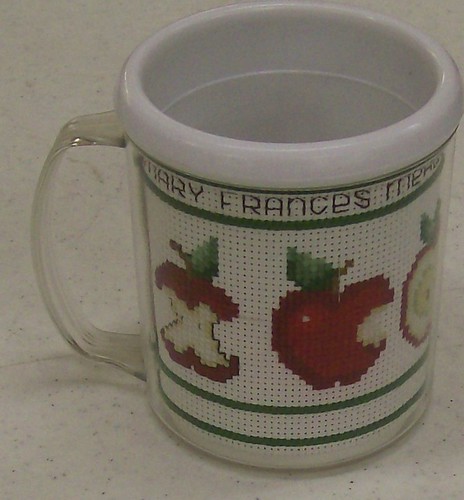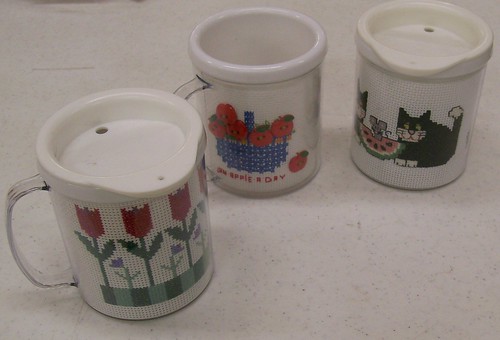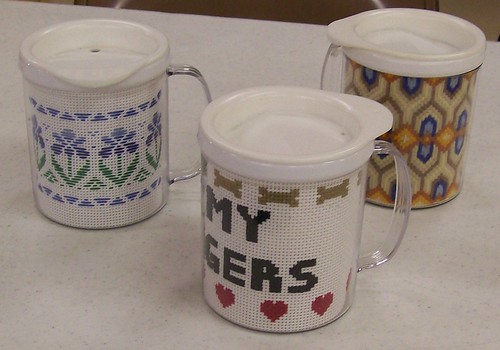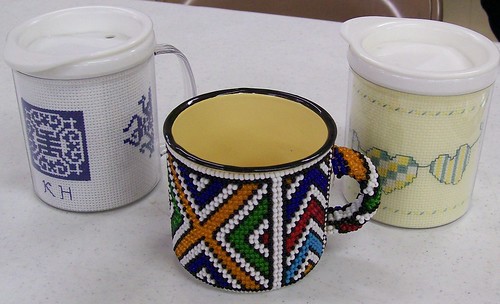




Most of the stitching was done on the vinyl insert that comes with the cup. That is really helpful in case some liquid might leak (heaven forbid) into the hollow core. I was amazed by all the different types of embroidery as well. Most of them were cross stitch, but one had darning stitch, and another bargello.
One cup was not stitched by the member, but is from South Africa, and has Ndebele beading on it. Even in providing a cup to use at the meeting, the stitching our members do is fantastic!
Who did the pattern darning one--I really like that!
ReplyDelete